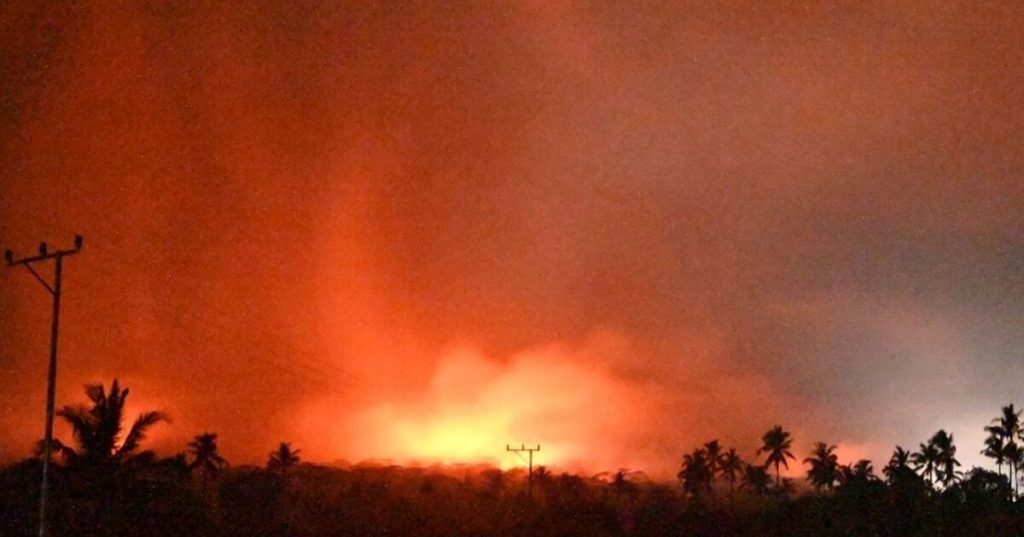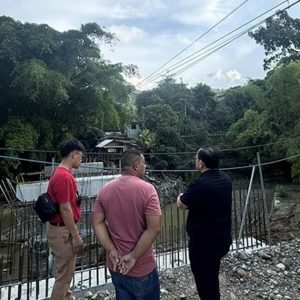
A series of volcanic eruptions on the remote Indonesian island of Flores has killed at least 10 people, the country’s National Disaster Management Agency (BNPB) has said.
The eruption at 5,200ft Mount Lewotobi Laki Laki just after midnight on Monday expelled thick, brownish ash up to 2,000 metres (6,500 feet) into the air, with hot ashes hitting a nearby village and burning down several houses, including a convent of Catholic nuns, according to Firman Yosef, an official at the Mount Lewotobi Laki Laki monitoring post.
The Disaster Management Agency revised the reported death toll from an earlier count of nine, noting that updated information had come in from local authorities.
The agency said it is still gathering details on the full extent of casualties and damage. Meanwhile, local media report that more individuals may be buried under collapsed structures.
Authorities raised the alert level for Mount Lewotobi Laki Laki today and extended the exclusion zone following a series of eruptions that began last week.
The country’s volcano monitoring agency elevated the volcano’s alert status to the highest level, expanding the exclusion zone to a 7-kilometre (4.3-mile) radius after midnight as eruptions became more frequent.
The agency reported that at least 10,000 people in Wulanggitang District have been affected by the eruption across six nearby villages: Pululera, Nawokote, Hokeng Jaya, Klatanlo, Boru, and Boru Kedang.
In Ile Bura District, four villages were impacted: Dulipali Village, Nobo, Nurabelen, and Riang Rita, while in Titehena District, four other villages were affected, including Konga Village, Kobasoma, Bokang Wolomatang, and Watowara.
Volcanic material was reportedly ejected up to six kilometres (3.7 miles) from the crater, covering nearby villages and towns with tons of volcanic debris, forcing residents to flee.
A nun in Hokeng village lost her life, and another nun is reported missing, stated Agusta Palma, the head of the Saint Gabriel Foundation, which oversees convents on the majority-Catholic island.
Mr Palma said: “Our nuns fled in panic through a rain of volcanic ash in the darkness.”
Photos and videos circulating on social media show tons of volcanic debris burying houses up to their rooftops in villages like Hokeng, where hot volcanic material ignited fires that consumed homes.
This marks Indonesia’s second volcanic eruption within two weeks.
Mount Marapi, located in West Sumatra province and one of the country’s most active volcanoes, erupted on 27 October, expelling thick columns of ash on at least three occasions and blanketing nearby villages with debris, though no casualties were reported.
A statement issued by the BNPB said: “In Ile Bura District, four villages were affected, namely Dulipali, Nobo, Nurabelen and Riang Rita Villages, while in Titehena District it affected four villages, namely Konga, Kobasoma, Bokang Wolomatang and Watowara Villages.
“BNPB monitored the affected population of 2,734 families / 10,295 people, with details in Wulanggitang District 2,527 families / 9,479 people and Ile Bura 207 families / 816 people.
“Currently, the Dulipali Village and Lewolaga Village communities, as well as the Lewolaga Village government, have prepared school premises as evacuation sites. On the other hand, the East Flores Regency Government has extended the emergency alert status for the Mount Lewotobi Laki-laki disaster for 96 days, starting from September 27 to December 31, 2024.”
Flores is home to the endangered Komodo Dragon, the world’s largest lizard which can reach up to three metres in length.






